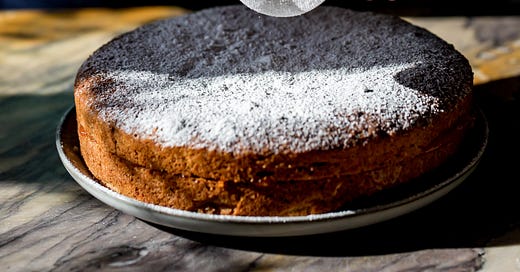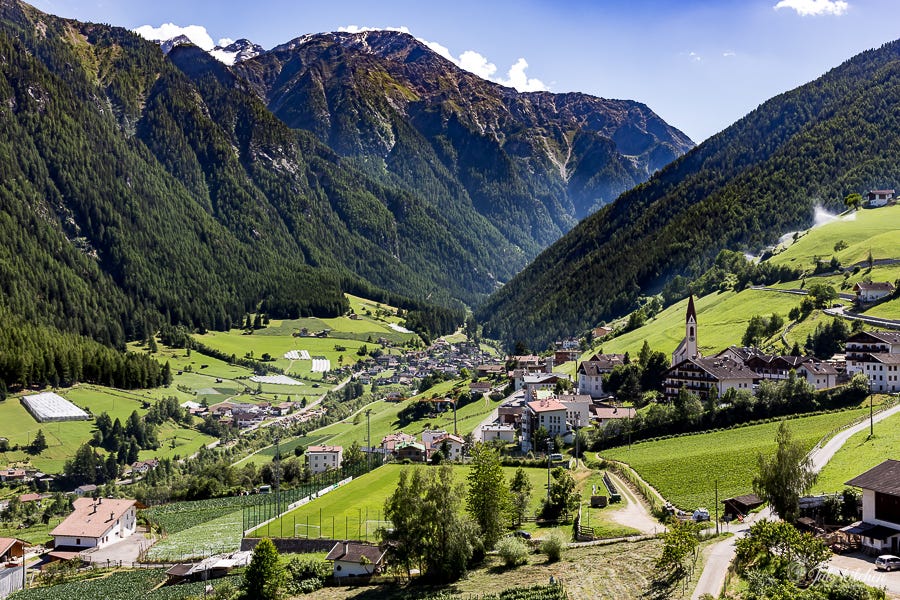Picture me in my kitchen upstairs, our family kitchen, not the studio kitchen where I used to teach classes and where we still test recipes and shoot photos. It’s a quiet mid-September Sunday afternoon, still summery hot outside, notwithstanding the cooler nights. I am sitting at the marble table with my laptop, a lukewarm tea, and a slice of buckwheat cake.
I used to bake every weekend, mainly for pleasure, then, somehow, I lost this decent habit in the name of a low sugar lifestyle. But eventually, I came to terms with it and decided that a slice of cake during the weekend was no harm at all. Especially when the said cake is homemade and baked for a friend who visited after two years.
This is how I found myself at this table, sipping my tea, munching on the cake while I am trying to find the right words to coax you to bake this buckwheat cake from Alto Adige.
Buchweizentorte - Buckwheat cake from Alto Adige
I’ve been to Alto Adige just a couple of times, enough to fall in love with this corner of Italy that has an entirely different atmosphere, far from the usual postcard of Italy you are used to. Here you will find breathtaking mountain views, Alpine lakes, forests, hiking trails, the perfect location for winter sports, organic raw honey, crystal clear waters and mountain springs, the best seasonal berries – included some of the most delicious strawberries I have ever tasted -, outstanding wines, monasteries and abbeys, Michelin starred restaurants and mountain huts where to feast on canederli and barley soup, speck and local cheese.
The local gastronomy is influenced by the neighbouring countries, mainly German-speaking areas, with a taste that is distinctively different from what you might expect in the Italian cuisine: ingredients, spices, and unusual combinations, soups more than pasta, smoked charcuterie rather than salt-cured, dark, dense bread, everything contributes to making the local cuisine extremely fascinating, delicious, and worth an extended stay.
Sitting in one of those picturesque mountain huts, I tried for the first time this buckwheat cake, rustic and dense, with a thick layer of redcurrant jam and a side of barely sweetened whipped cream.
Buckwheat was introduced into Italy in the late 14th and early 15th centuries. It grows well in cold mountain regions, so it soon became a staple for the Alpine area. It is used to make polenta, pizzoccheri, focaccia, and this incredible cake, naturally gluten-free, rich with butter and a grated apple.






